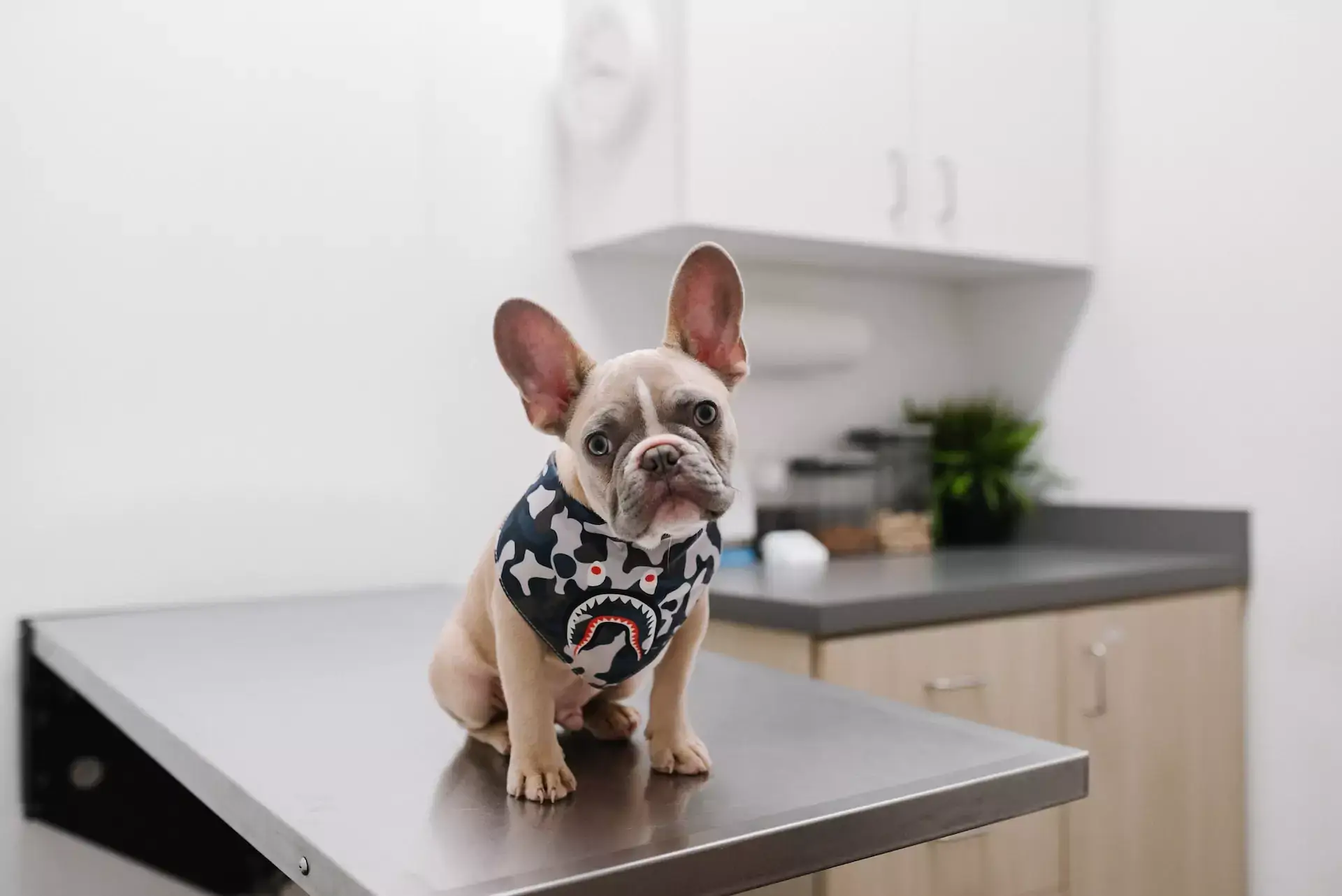May is National Chip Your Pet Month. While people may vary a bit on the details of their pet care regimes, this is one thing that any and all pets will benefit from. Microchipping your pet can greatly increase the chances of you being reunited if ever your furry friend was to get lost. Read on as a local Clarkesville, GA vet offers some advice on microchipping your pet.
How Do Pet Microchips Work?
Microchips use a technology known as passive radio-frequency identification (RFID) technology. The microchip—which is also known as a transponder or a PIT (passive transponder tag)—is usually dormant. Chips are only activated when a special scanner passes over them. These scanners emit low-frequency radio waves, which activate the chip. The chip will then transmit that unique ID number. It will then pop up on a screen on the device.
Can I Track My Pet With A Microchip?
No. Microchips do not have GPS technology. The roadblock here is the power source. This isn’t likely to change until scientists figure out how to power a microchip off of Fluffy’s purrs and Fido’s tail wags.
However, you can get your pet GPS tags, which is definitely a great new product. You’ll want to look over the different options before purchasing one, though. Various companies and products differ quite a bit here. Some of the things to look into include battery life, range, technology used, waterproofing capacity, and subscription fees. For example, some of these devices run by satellite, while others go by wi-fi. That said, these have already helped plenty of pet owners corral their wayward pets.
What Is A Microchip?
Microchips are basically a sort of permanent ID tag, except that it is implanted in your pet. With dogs and cats, it’s typically placed between the shoulder blades, just under the skin. These form an invisible link between you and your furry bestie.
What Is The Microchipping Process Like?
Your vet will use a hypodermic needle to place the chip under your pet’s skin. This is often done along with spay/neuter surgery. This makes sense, as the animal is already at the clinic and under anesthesia. However, you can also schedule it by itself. Ask your Clarkesville, GA vet for more information.
Is The Microchipping Procedure Painful?
No. This is a very quick and simple process. For Fido and Fluffy, it’s not much different than getting a shot. You won’t need to worry about recovery time. (Of course, your furry pal may very well appreciate an extra treat or a new toy.)
How Long Will My Pet’s Microchip Last?
On average, microchips last about 25 years. That’s much longer than the average lifespan of a dog or cat. People with pets who have longer lifespans than that, such as birds, may eventually need to get new chips.
Can Phones Scan Pet Microchips?
No, they cannot. This isn’t likely to change either, as the technology used in phones is ultimately not compatible with microchips.
What Happens If Someone Steals A Microchipped Dog?
This is actually one of the reasons that microchipping is so important. Microchips do hold up in a court of law, and are one of the best ways to prove ownership. Plus, they cannot be easily cut off the way that collars can.
Do I Have To Do Anything To Maintain My Pet’s Microchip?
No. Microchips are basically dormant most of the time. They don’t need maintenance or upgrades. That said, you may want to have your vet check your pet’s chip during their usual appointments, just to make sure that it is still working and hasn’t slipped out of place.
You’ll also need to keep your pet’s records current.
Do I Need To Pay A Subscription Fee After Getting My Pet Chipped?
Some companies do have packages that come with fees. However, there are also many places that offer a one-and-done lifetime cost. Ask your Clarkesville, GA vet for more information.
What Do I Do After I’ve Gotten My Pet Microchipped?
You’ll need to fill out your records in the chipmaker’s registry. This is crucial! If your contact information is missing or outdated, the chip won’t be of any use.
It’s also important that you remember to do this if you move or change your contact information.
Why Is Microchipping My Pet Important?
Microchips serve as a lifeline connecting you and your beloved pet. While many people don’t even like to think of their beloved pets going missing, the truth is that this happens far more often than you may think. In fact, about one in three pets gets lost at least once over the course of their lifetime.
Many people assume that, because their pets are loving and loyal, they’ll never run off. That unfortunately isn’t the case. Keep in mind that pets can easily run off if frightened. It’s also very easy for accidents to happen, such as a meter reader leaving a gate open. There is also usually a big spike after July 4th and New Year’s Eve, when many pets get frightened by the noise and fireworks and run off.
What Are The Stats On Pet Microchips?
The numbers on lost pets are quite sobering. A recent study by Ohio State University shed some light on this topic.
- 73% of owners of stray dogs and cats were contacted (74% for dogs and 63.5% for cats).
- 74% of the owners wanted their pets back (76% for dogs and 61% for cats).
- Microchipped dogs were returned to their owners 2.4 times more than all stray dogs (52.2% vs. 21.9%)
- Microchipped kitties were 21.4 times more likely to go home than unchipped kitties (38.5% vs. 1.8%).
- When owners weren’t found, it was most often because the phone numbers were incorrect or disconnected. Those cases made up about 35.4 percent of tracked cases. Another 24 percent of the owners never returned calls or letters. About 10 percent of the chips were unregistered, while 17 percent were registered in a different database than the chipmakers’.
What Are The Other Benefits Of Microchips?
Although microchips aren’t GPS-compatible, there are some products that you can link up to Fluffy and Fido’s microchip. Pet doors are one example. If you have a fenced yard, you can let your furry pal come and go as they like, without worrying that you’ll find a raccoon in your living room. You can also get dishes that will only open for a specific chip. This is helpful if you have multiple pets, and one or more of them needs to eat a special diet.
What Other Animals Are Microchipped?
This is most often done in dogs and cats, but quite a few other animals can also have chips. That list includes cats, dogs, rabbits, birds, horses, livestock, ferrets, tortoises, and reptiles.
Do I Still Need ID Tags?
Absolutely! These are required by law in many places now. Even if you live in an area where they aren’t mandated, they are still important. This really would be the easiest way for someone to contact you if they find your furry buddy. (Note: we recommend adding the word REWARD to the tag as an incentive for people to return them.)
Contact Your Clarkesville, GA Pet Clinic
Do you need to schedule an appointment for your pet? Has it been a while since your pet has been to the animal clinic? Please feel free to contact us today. As your local Clarkesville, GA pet hospital, we are here to help!







!Social Media Icons